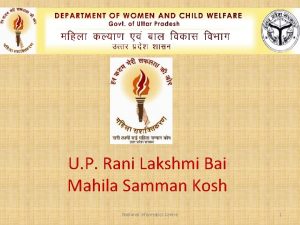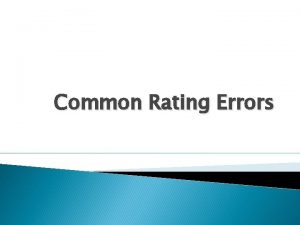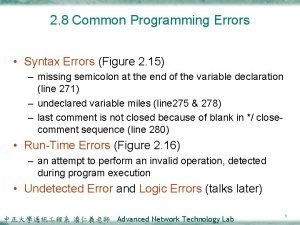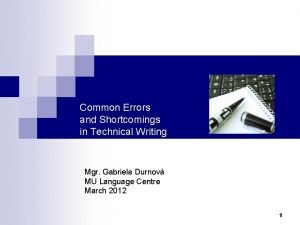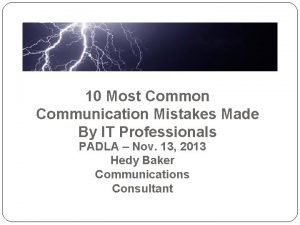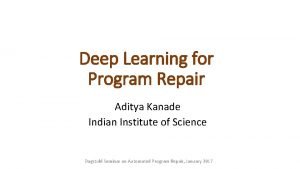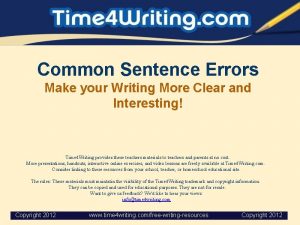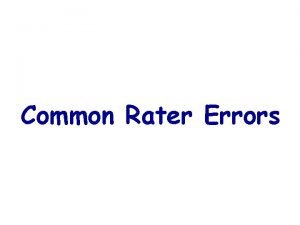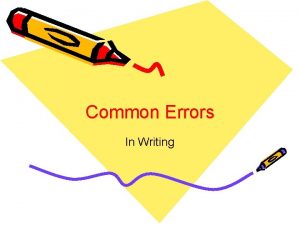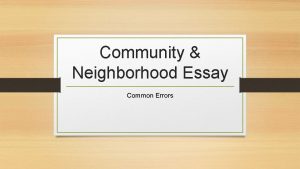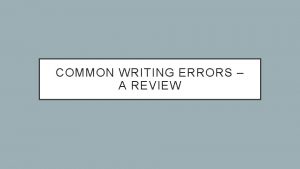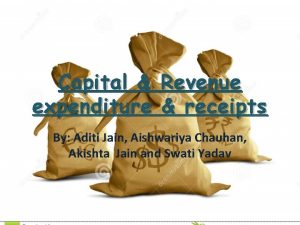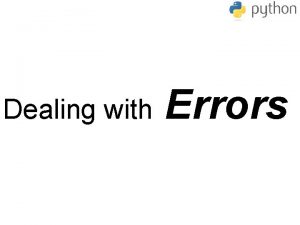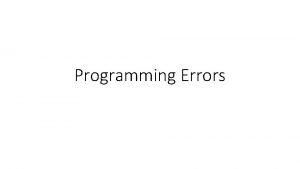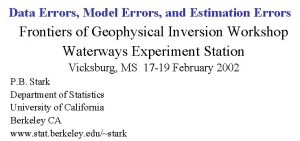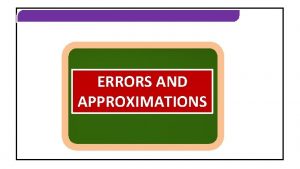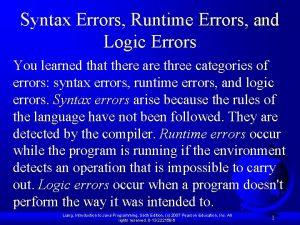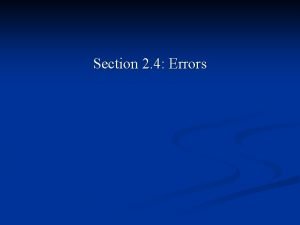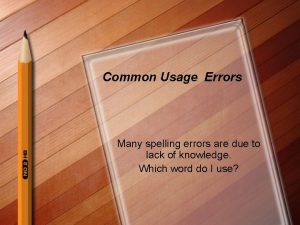COMMON ERRORS IN ENGLISH S L Aishwariya Laxmi














- Slides: 14

COMMON ERRORS IN ENGLISH S. L. Aishwariya Laxmi

WHICH WORD OR PHRASE TO USE He gave some good advice. (Not, advices) You should follow your doctor’s advice Let me give you a piece of advice What do you advise me to do? You are the best person to advise me on this question.

ALRIGHT OR ALL RIGHT “Alright” is an incorrect way of writing “All right” I hope you are all right.

AMONG; BETWEEN “Among” is used for more than two persons or things. “Between” is used for only two persons or things. The sweets were divided among the five boys I stood between my father and my mother.

A NEWS; NEWS It is wrong to say “I have a news for you” Say: “ I have some news for you” The word “news” has no plural. So do not say, “All the news are good” Say: “All the news is good” Note: You can say: a piece or pieces of news; a bit or bits of news; but never “a news”, e. g I have a piece of news for you These bits of news only increase my anxiety. I heard only the last item of news on the radio.

A SCISSOR OR SCISSORS It should be “scissors” because the instrument has two blades. It is, therefore, wrong to say, “Bring me the scissor” or, “Where is the scissor? ” Say: “Bring me the scissors. ” or “Where are the scissors? ”

A SPECTACLE OR SPECTACLES It should be “spectacles”, e. g He is wearing spectacles ( or, a pair of spectacles) (Not, he is wearing a spectacle)

AT; IN “At” refers to a point of time. “In” refers to a larger space of time, e. g. He came at 2 o’ clock in the afternoon. In the same way, for a small place we use “at” and for a bigger place, we use “in”, e. g He lives at Kuala Lumpur in Malaysia.

DISCUSS ABOUT “Discuss” means “to talk about”. It is, therefore, not necessary to use the word “about”, e. g. We shall discuss the matter I want to discuss a question with you I discussed with him how to do it.

EACH OTHER; ONE ANOTHER “Each other” is used for “two” persons; “One another” for “more than two”, e. g The two girls helped each other The people helped one another.

INFORMATION; INFORMATIONS I have received some information Can you give me any information on this matter That’s a useful bit of information

ITS VS. IT’S Its is a possessive. It’s is a short form for It is. 1. This is a cat. Its tail is long. 2. That is a table. Its legs are broken. 3. It’s a long distance from here. 4. It’s broken.

ONE OF THE 1. He is one of the boys 2. She is one of my friends.

SCENERY OR SCENERIES 1. I like the mountain scenery 2. They stopped to admire the scenery. ‘Scenery’ is singular.
 Rani laxmibai mahila samman kosh
Rani laxmibai mahila samman kosh Common rating errors
Common rating errors Common syntax errors
Common syntax errors Technical writing mistakes
Technical writing mistakes Common errors in communication
Common errors in communication Deepfix: fixing common c language errors by deep learning
Deepfix: fixing common c language errors by deep learning Common sentence errors
Common sentence errors Common errors in investment management
Common errors in investment management Rater errors
Rater errors Greatest common factor of 54 and 72
Greatest common factor of 54 and 72 Common anode and common cathode
Common anode and common cathode Hcf 60 and 72
Hcf 60 and 72 What are the factors for 54
What are the factors for 54 Gcf of 72 and 90
Gcf of 72 and 90 Multiples of 9 and 21
Multiples of 9 and 21
